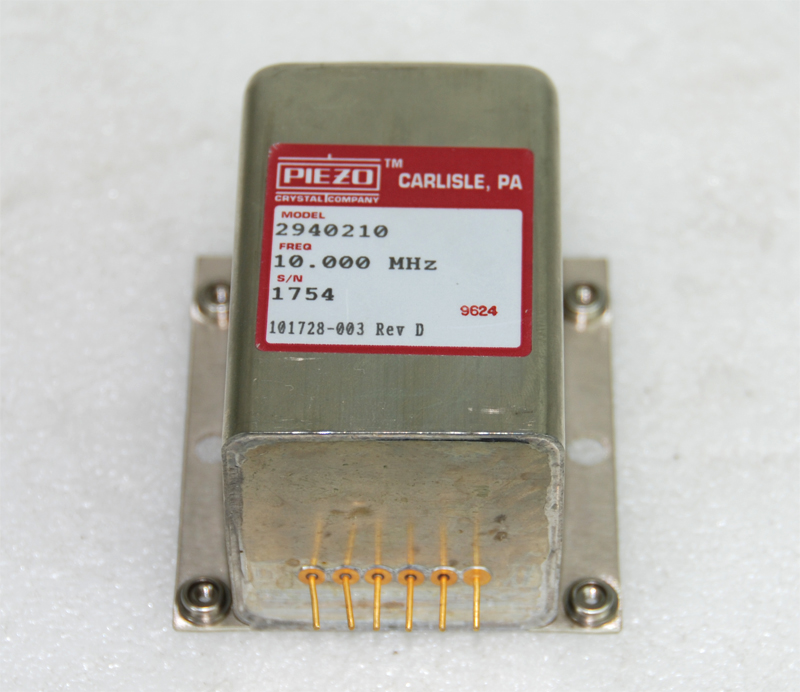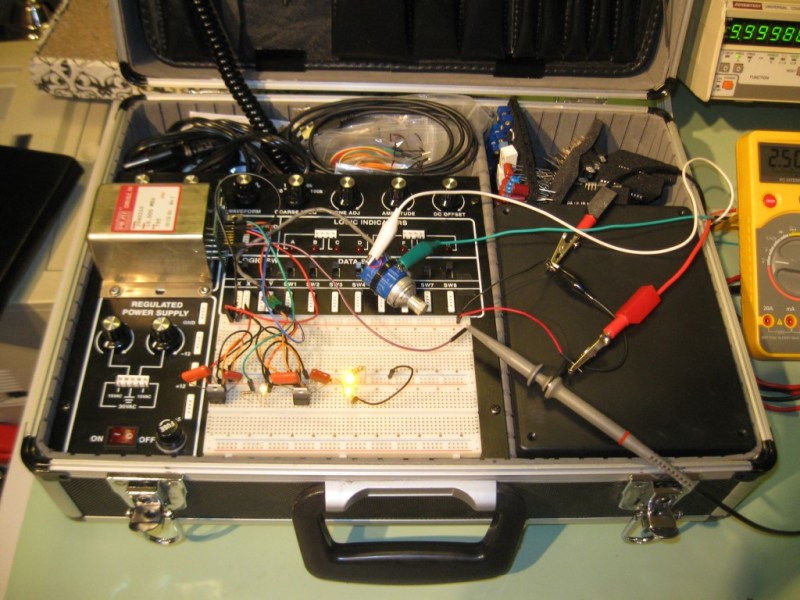Our hacker [Wil Carver] has sent in his submission for the One Hertz Challenge: Precise Time Ref via 1 Pulse-Per-Second GPS Signal.
 This GPS Disciplined Oscillator (GPSDO) project uses a Piezo 2940210 10 MHz crystal oscillator which is both oven-controlled (OCXO) and voltage-controlled (VCXO). The GPSDO takes the precision 1 Pulse-Per-Second (PPS) GPS signal and uses it to adjust the 10 MHz crystal oscillator until it repeatedly produces 10,000,000 cycles within one second.
This GPS Disciplined Oscillator (GPSDO) project uses a Piezo 2940210 10 MHz crystal oscillator which is both oven-controlled (OCXO) and voltage-controlled (VCXO). The GPSDO takes the precision 1 Pulse-Per-Second (PPS) GPS signal and uses it to adjust the 10 MHz crystal oscillator until it repeatedly produces 10,000,000 cycles within one second.
[Wil] had trouble finding all the specs for the 2940210, particularly the EFC sensitivity (S), so after doing some research he did some experiments to fill in the blanks. You can get the gory details in his notes linked above.
In a Voltage-Controlled Crystal Oscillator (VCXO), the EFC pin is the tuning-voltage input. EFC stands for Electronic Frequency Control. [Wil] found that he needed to push the EFC up to around 4.34V in order to get 10 MHz output, which is a bit out of spec, usually the center of the range should be around 2.5V. [Wil] put this discrepancy down to the age of the crystal oscillator. You can see a chart of this behavior in the notes.
[Wil] had nice things to say about Tom Van Baak’s website, LeapSecond.com, where you can learn about timing accuracy, precision, and stability. He also suggested searching for “Allan Variance” if you’re interested in the measurement of stable timing sources.
If you’re interested in OCXOs be sure to check out XOXO For The OCXO and Inside A Vintage Oven Controlled Crystal Oscillator.

















This is really easy with those cheap GPS modules (<$5 AliExpress et al) as the PPS (Pulse Per Second) signal is on the header.
For those where it isn’t on the header (4 pin as opposed to 5 pin) it’s easy enough to find. Or take if from the blinking LED.
I’m doing something similar. Don’t know if a VCXO would really improve for my needs.
The 1PPS output of cheap GPS modules has a jitter of tens of nanoseconds and up. When you discipline a VCXO with the 1PPS of a GPS, you can bring the jitter down way below nanoseconds.
Below nanoseconds?
Just make sure it has a good fix. I tried with some random module indoors, and sometimes it would drop the fix and output not-quite-1 Hz for a moment. No problem when user notices it, but for automated measurements it could cause real havoc.